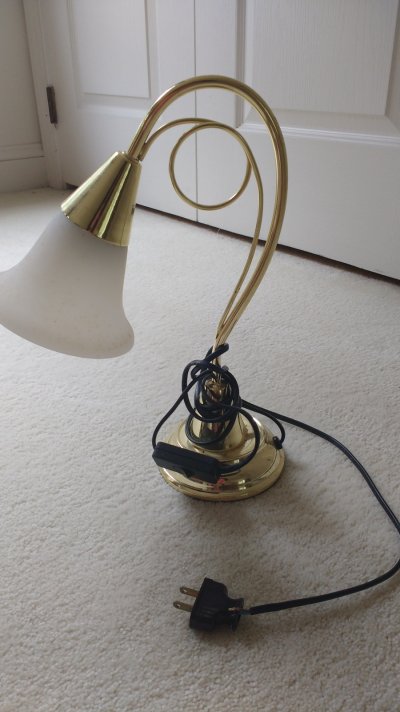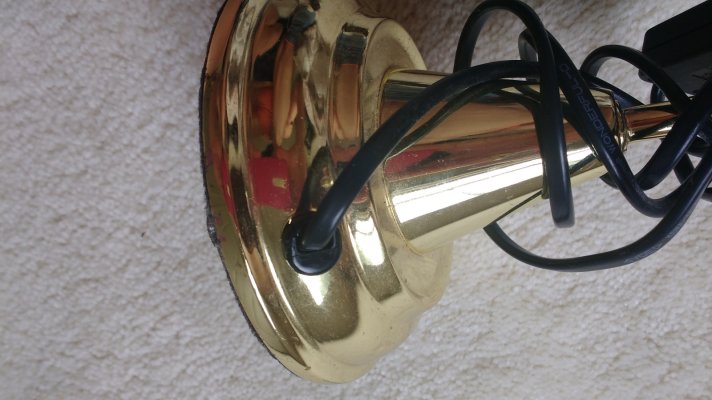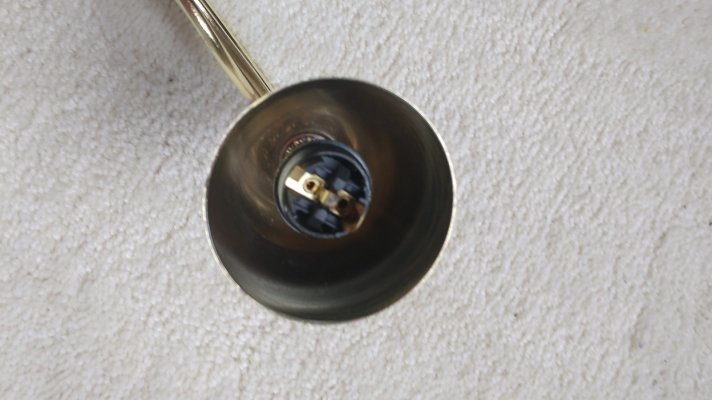Amethyst
Give me a museum and I'll fill it. (Picasso) Give me a forum ...
- Joined
- Dec 21, 2008
- Messages
- 12,668
When we returned from England, we brought along a pair of bedside reading lamps that I just fell in love with. They are solid brass and pretty. They also gave a great light for reading.
A few years ago, I took them into a local lamp store (since gone out of business) to get them rewired. They wouldn't do the job. It was never clear to me why not.
So I have looked on Youtube, and it seems like replacing lamp guts is not a big deal - but then why wouldn't the lamp store at least work with me? Am I missing something hard about yanking out (No Pun Intended) UK lamp guts? I realize that English lamp bulbs burn far brighter b/c of the 240 volt power supply, yet I'd think today's LED bulbs would make up for that.
Attached are some photos: the lamp, the wiring, the bulb aperture. The base is covered with felt, which I can remove. Can anyone see anything that would make the switchover difficult? Happy to provide more photos, if it will help.
Thanks,
Amethyst
A few years ago, I took them into a local lamp store (since gone out of business) to get them rewired. They wouldn't do the job. It was never clear to me why not.
So I have looked on Youtube, and it seems like replacing lamp guts is not a big deal - but then why wouldn't the lamp store at least work with me? Am I missing something hard about yanking out (No Pun Intended) UK lamp guts? I realize that English lamp bulbs burn far brighter b/c of the 240 volt power supply, yet I'd think today's LED bulbs would make up for that.
Attached are some photos: the lamp, the wiring, the bulb aperture. The base is covered with felt, which I can remove. Can anyone see anything that would make the switchover difficult? Happy to provide more photos, if it will help.
Thanks,
Amethyst





